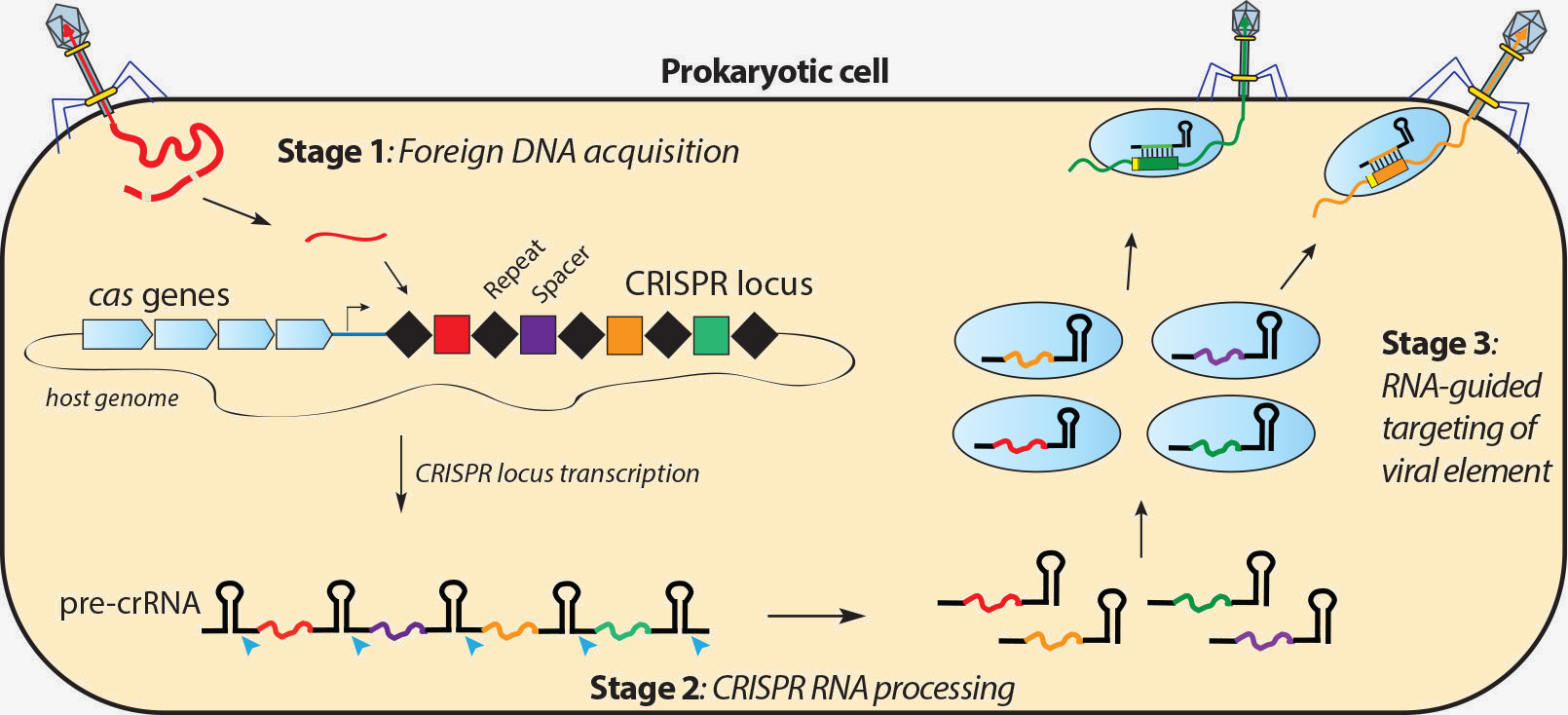CRISPR Gene Editing Technology Transforming Biology and Medicine
What is CRISPR?
CRISPR (Clustered Regularly Interspaced Short Palindromic Repeats) is a revolutionary gene editing technology that allows scientists to modify DNA sequences with unprecedented precision, efficiency, and flexibility. It has emerged as a powerful tool for genome engineering, with applications spanning from basic research to biotechnology and medicine.

How Does CRISPR Work?
The CRISPR system is based on a naturally occurring defense mechanism found in bacteria and archaea, which use it to protect against viral infections. The key components of the CRISPR system are:
- Cas Protein: A CRISPR-associated (Cas) endonuclease protein, such as Cas9, acts as a "molecular scissors" that can cut DNA at a specific location.
- Guide RNA: A small RNA molecule that guides the Cas protein to the target DNA sequence. The guide RNA is designed to be complementary to the target DNA, ensuring specificity.
In the CRISPR-Cas9 system, the guide RNA directs the Cas9 protein to the target DNA sequence, where it creates a double-strand break. This break can then be repaired by the cell's own DNA repair mechanisms, either by non-homologous end joining (NHEJ) or homology-directed repair (HDR). NHEJ can result in small insertions or deletions, while HDR can be used to introduce specific genetic modifications using a donor DNA template.
Applications of CRISPR
CRISPR technology has a wide range of applications across various fields:
Basic Research
CRISPR is a powerful tool for studying gene function, genetic interactions, and biological processes. It allows researchers to create precise genetic modifications in a variety of organisms, from bacteria and yeast to plants and animals. This has greatly accelerated the pace of discovery in fields such as genetics, developmental biology, and neuroscience.
Agriculture and Biotechnology
CRISPR has the potential to revolutionize agriculture and biotechnology by enabling the development of crops with improved traits, such as increased yield, enhanced nutritional value, and resistance to pests and diseases. It can also be used to create new strains of microorganisms for industrial biotechnology applications, such as the production of biofuels, chemicals, and pharmaceuticals.
Medicine and Gene Therapy
CRISPR holds great promise for treating genetic diseases and developing new therapies. It can be used to correct disease-causing mutations in human cells, either ex vivo (outside the body) or in vivo (inside the body). CRISPR-based gene therapies are being developed for a range of diseases, including cancer, blood disorders, and inherited genetic conditions.
Challenges and Ethical Considerations
Despite its remarkable potential, CRISPR technology also raises several challenges and ethical considerations:
- Off-Target Effects: While CRISPR is highly specific, it can sometimes create unintended mutations at sites other than the target DNA sequence. Researchers are working to improve the specificity and efficiency of CRISPR systems to minimize these off-target effects.
- Safety and Long-Term Effects: The safety and long-term consequences of CRISPR-based therapies need to be carefully evaluated, especially for applications involving human germline editing, which could affect future generations.
- Ethical and Societal Implications: The use of CRISPR for human germline editing and the creation of genetically modified organisms raises complex ethical and societal questions. These include issues of equity, access, and the potential misuse of the technology.
To address these challenges, ongoing research, public engagement, and the development of appropriate regulations and guidelines are essential to ensure the responsible and beneficial use of CRISPR technology.
Future Perspectives
CRISPR technology is rapidly evolving, with new variants and improvements being developed to enhance its specificity, efficiency, and versatility. Future advancements in CRISPR may include:
- Expansion of the CRISPR toolkit with novel Cas proteins and guide RNA designs
- Development of more precise and efficient CRISPR delivery methods
- Integration of CRISPR with other technologies, such as single-cell sequencing and high-throughput screening
- Exploration of CRISPR-based therapies for a broader range of diseases
As CRISPR technology continues to advance, it holds immense potential to transform our understanding of biology, revolutionize biotechnology and agriculture, and pave the way for new treatments for genetic diseases.
Further Reading
Annual Review of Plant Biology, CRISPR-Cas Genome Editing and Precision Plant Breeding in Agriculture
Nature Reviews Nephrology, Advances in CRISPR therapeutics
